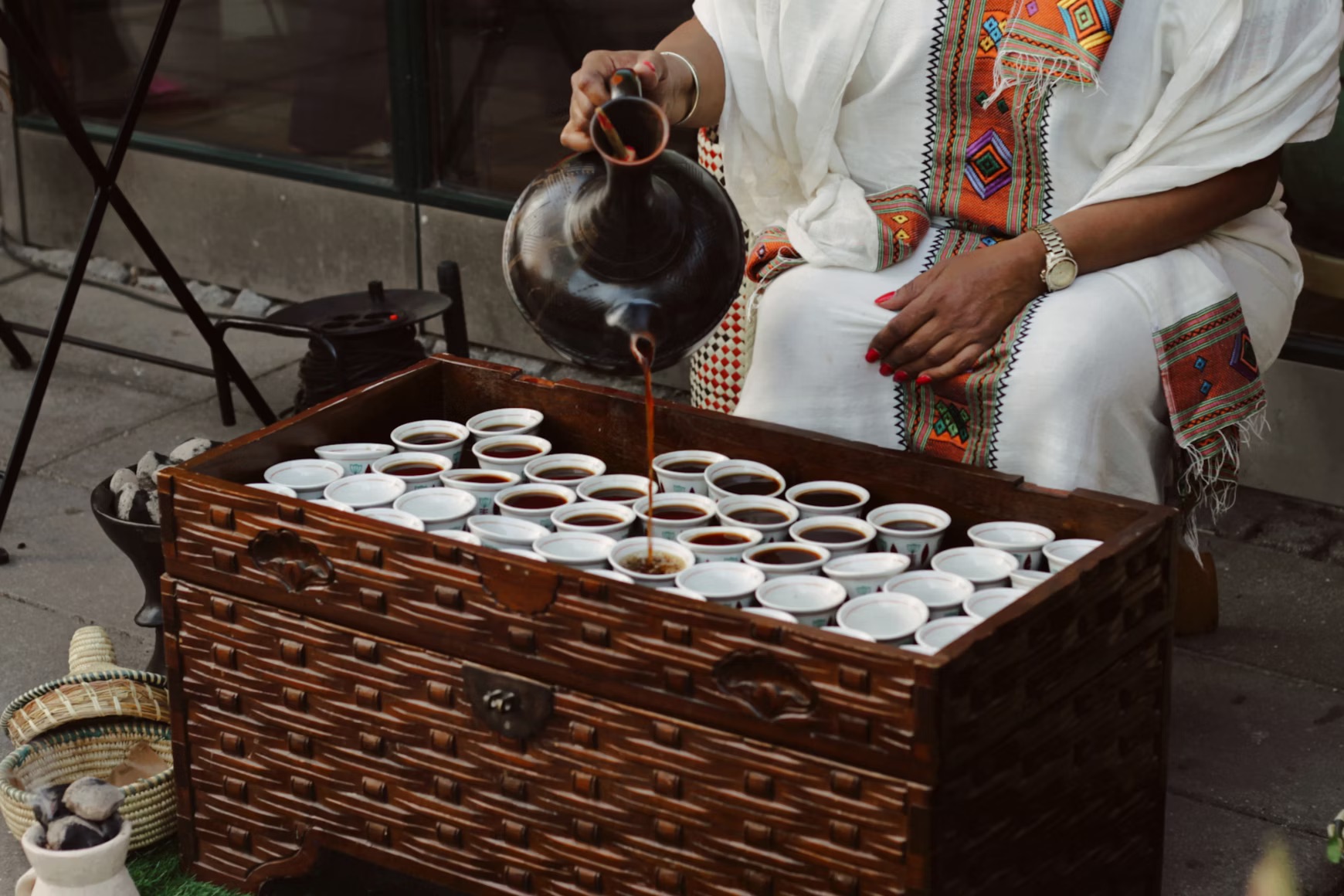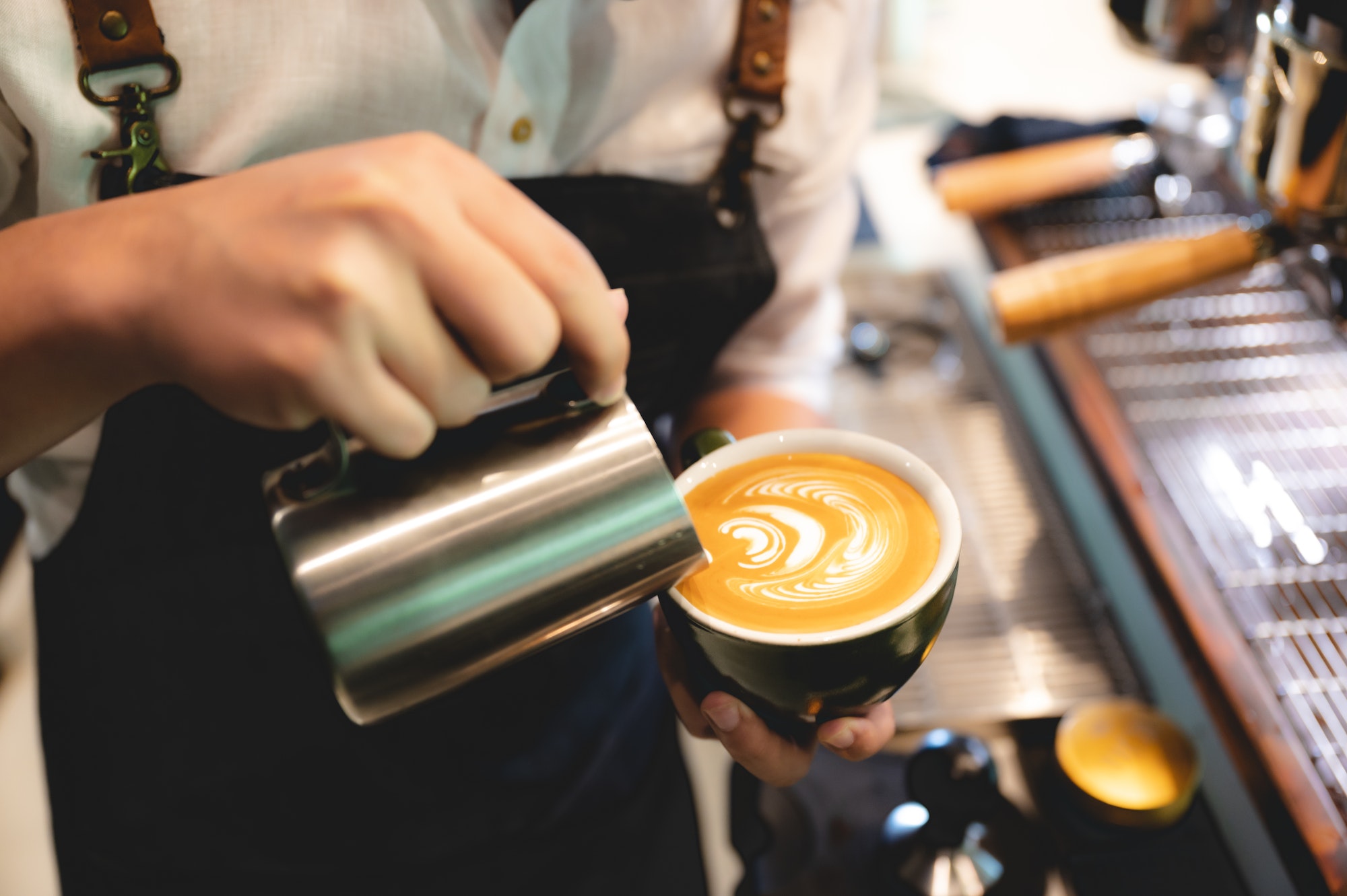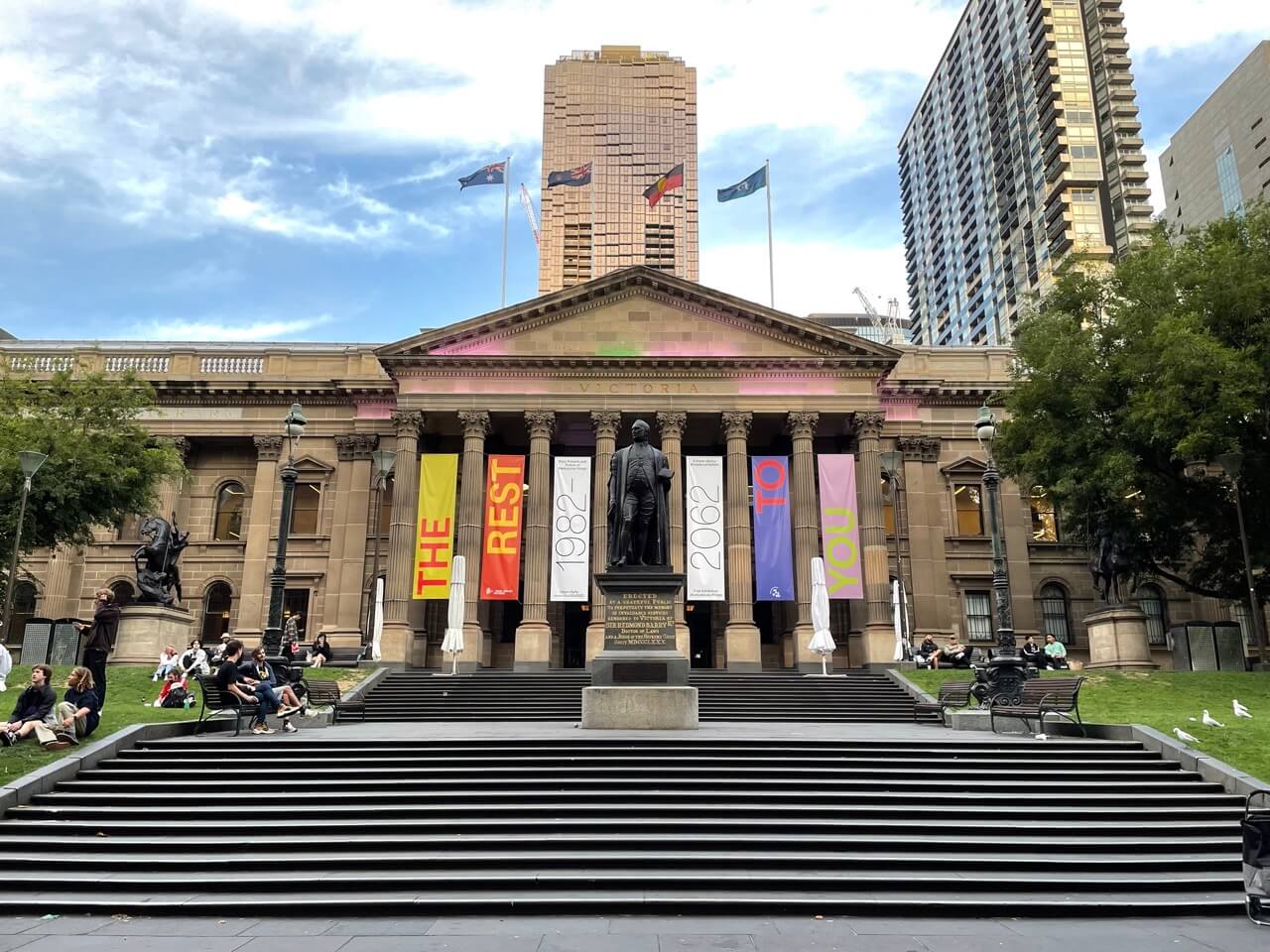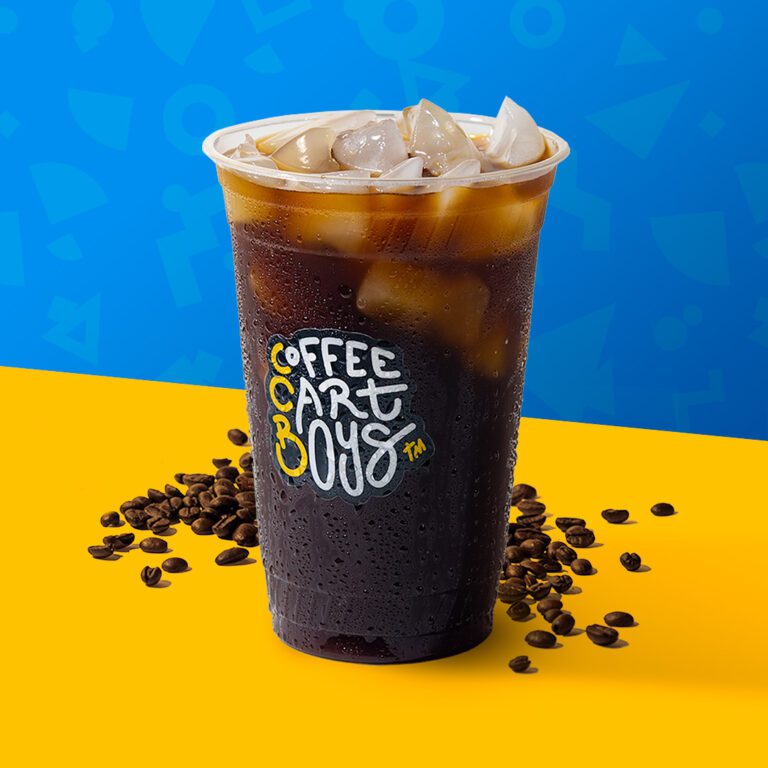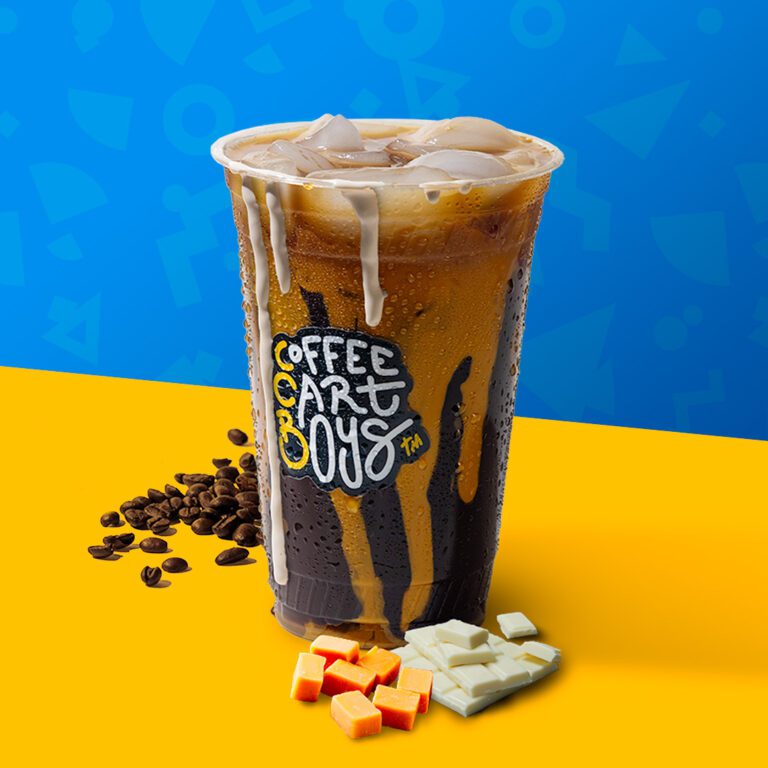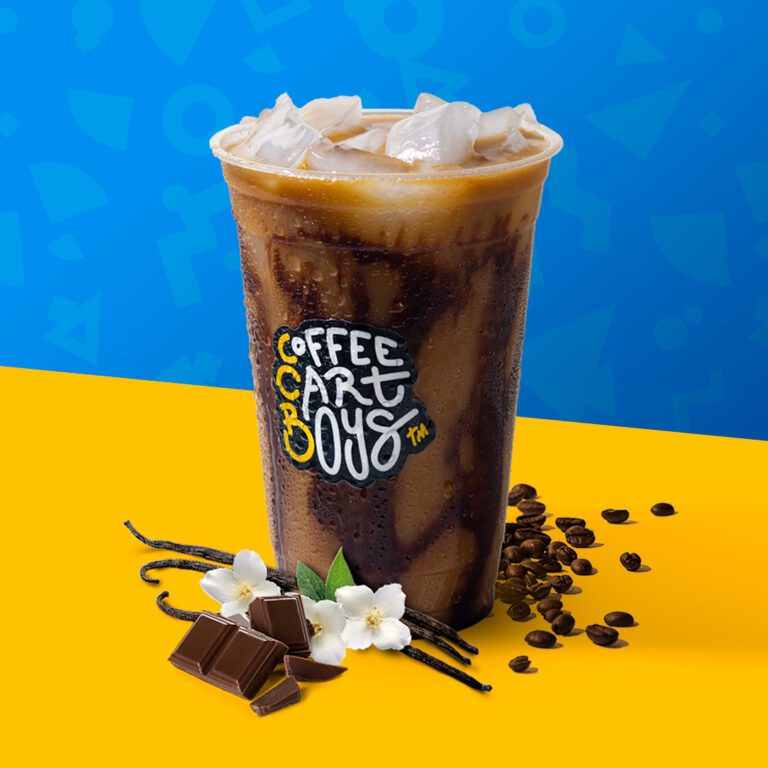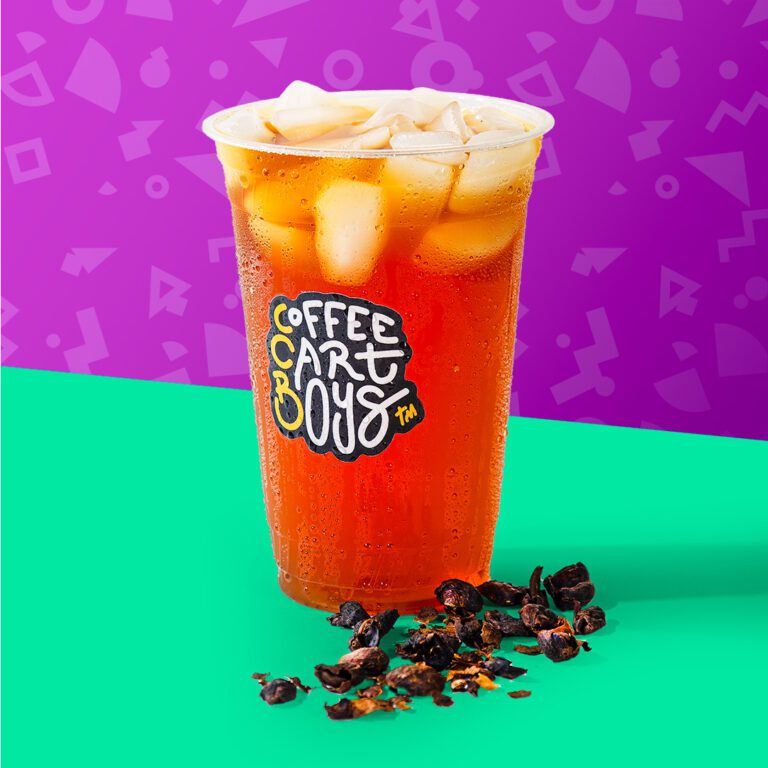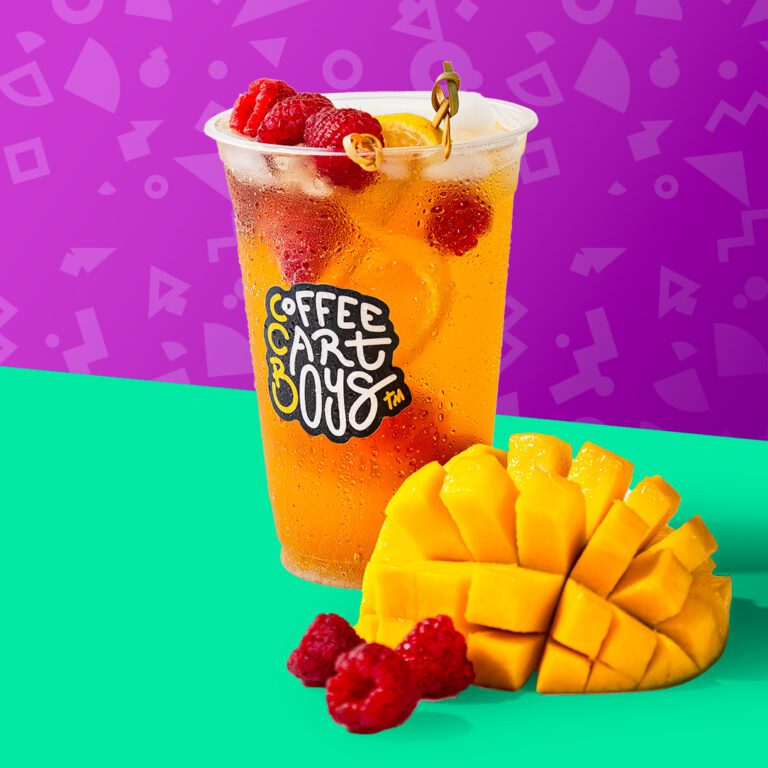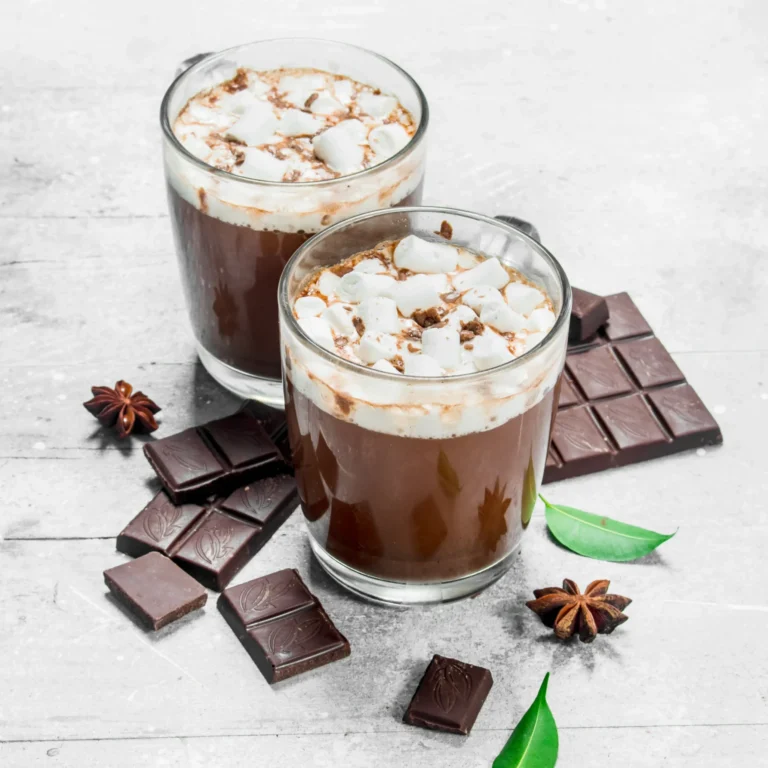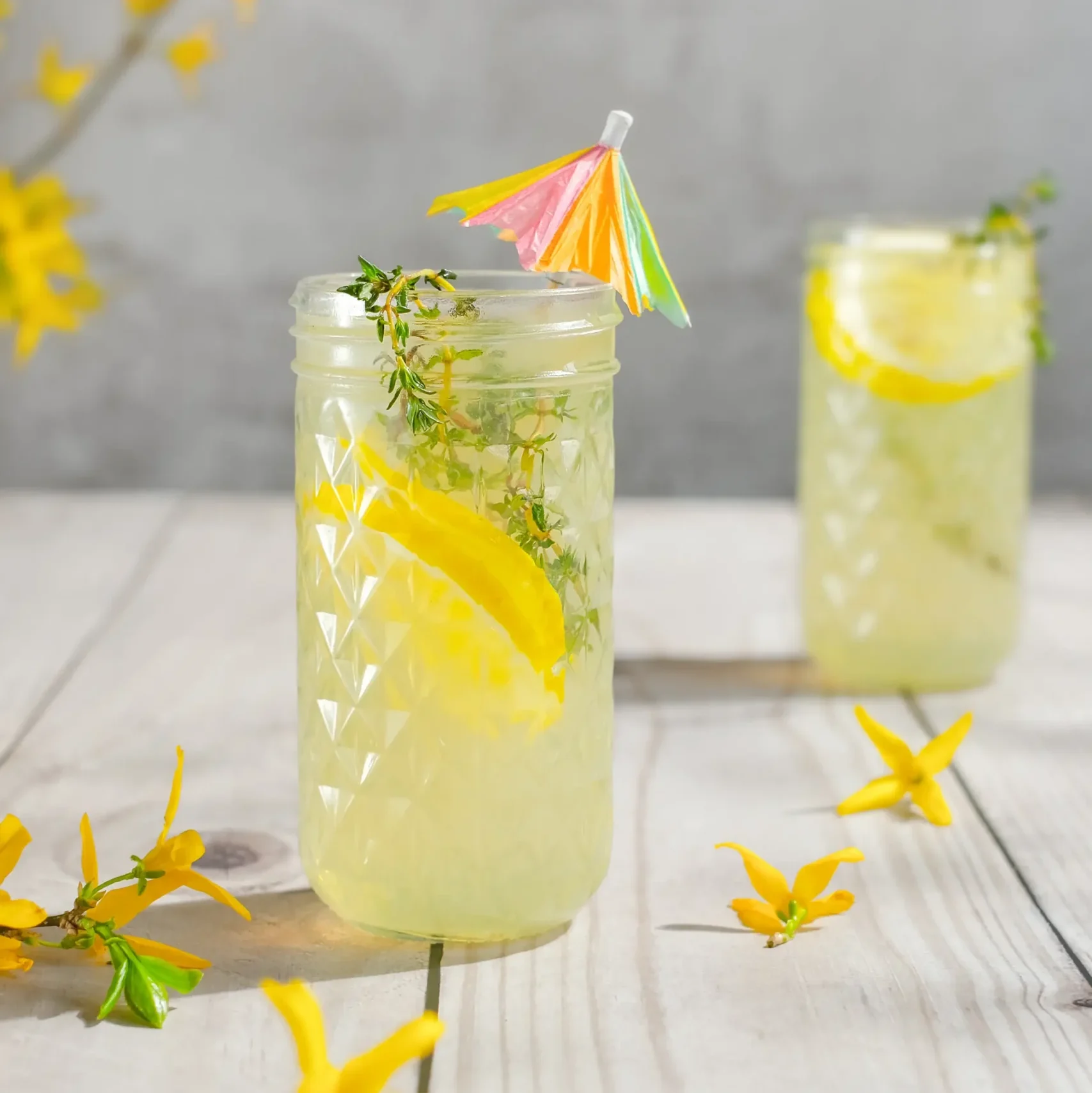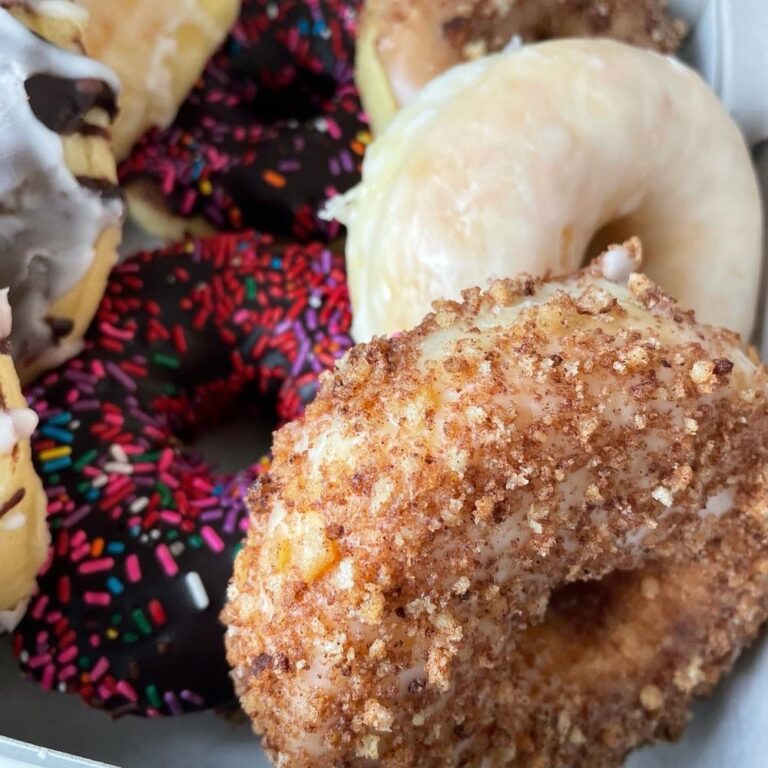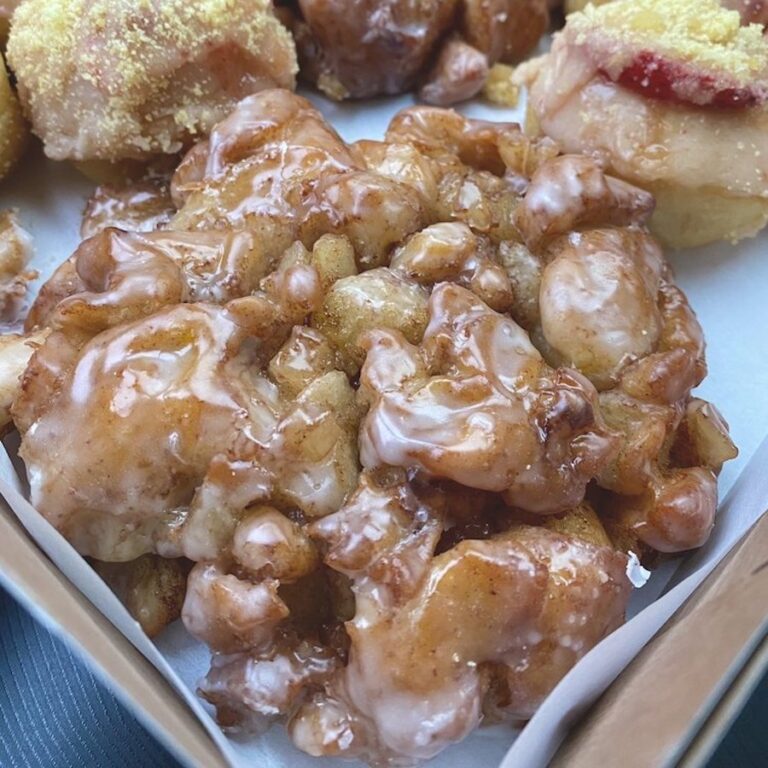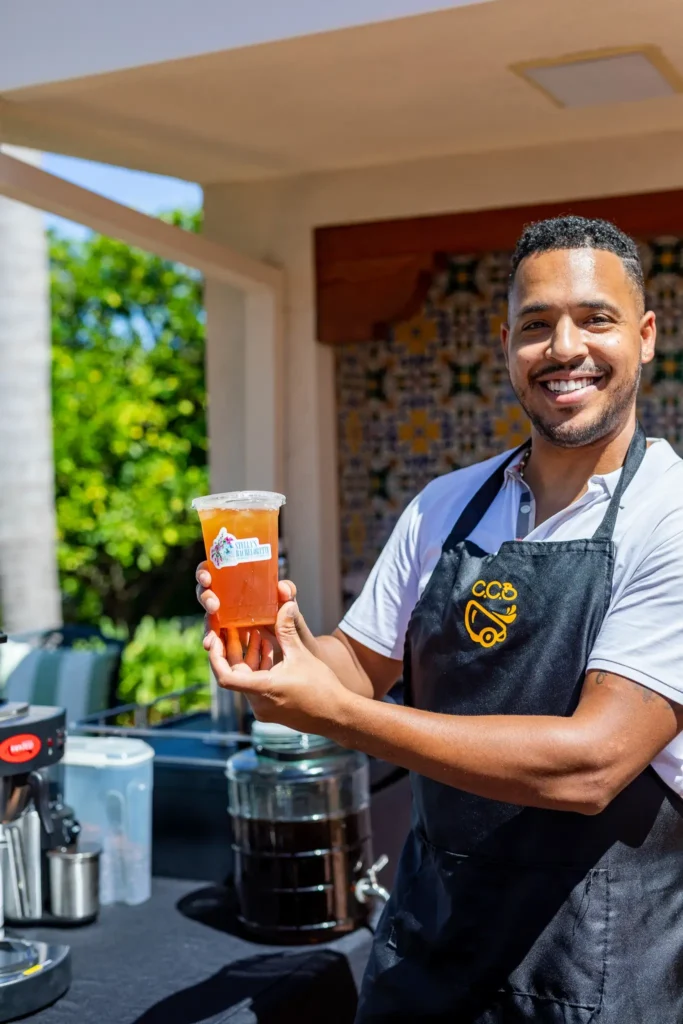Before I start rambling about how many Kenny Powers style emulations there are in Australia, let’s talk about how Australians are genuinely passionate about coffee. But not just any coffee…we’re talking specialty coffee. If you’re unfamiliar with the term, specialty coffee, it’s also known as the third wave of the coffee industry; for more info, check out our blog post about the differences between commercial and specialty coffee.
This guide is strictly no-frills and is meant for coffee lovers who aren’t afraid to go back to the basics. It’s for those who dare to ditch their usual venti, chocolate hazelnut Frappuccino with extra caramel in favor of a simple flat white, long black, cortado/piccolo, double ristretto, “magic”, or black filter coffee. If you’re unfamiliar with these terms, don’t worry: I’ll define them later in this post.
Best Melbourne Coffee Shops at a Glance
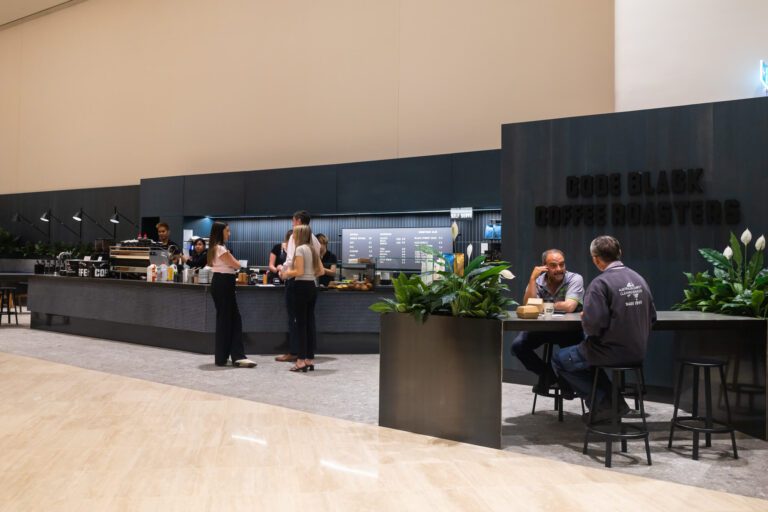
Code Black
Neighborhood: Downtown Melbourne / Central Business District (aka CBD)
Location we visited: 360 Collins Street (first floor lobby of a commercial office building)
Address: Foyer/360 Collins St, Melbourne VIC 3000
Good For: Grab-n-go, quick and casual chat

Growers Espresso (Eureka Coffee)
Neighborhood: North Fitzroy
Address: 332/334 St Georges Rd, Fitzroy North VIC 3068
Good For: Longer visit, chatting with Baristas, family-friendly, grab-n-go

Industry Beans
Neighborhood: Fitzroy
Address: 70-76 Westgarth St, Fitzroy VIC 3065
Good For: Longer visit, chatting with Baristas, family-friendly, grab-n-go
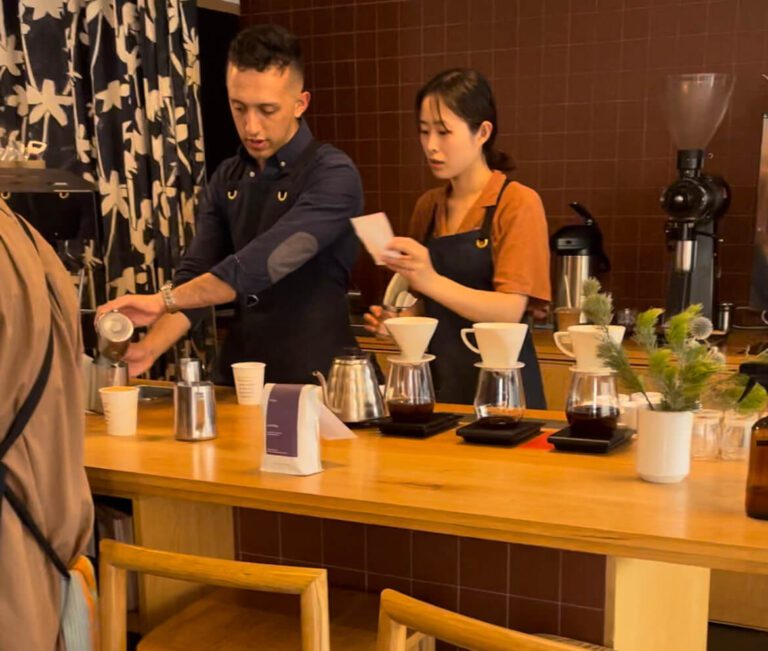
Market Lane Coffee
Neighborhood: Downtown Melbourne / Central Business District (aka CBD)
Location we visited: Queen Victoria Market
Address: 83-85 Victoria St, Melbourne VIC 3000
Good For: Grab-n-go
WARNING:
I’m seriously going to start nerding out on coffee culture and history right now. So, if you’re uninterested in my fascinating, albeit nowhere-close-to-Nobel-Prize-winning thoughts preceding the list, jump to the deets via this button:
What is the history of Melbourne coffee culture?
The rich history of Melbourne coffee culture in Australia has played a significant role in shaping the city’s current food and beverage scene. Coffee first became popular in Melbourne in the early 19th century, specifically the 1830s in the form of coffee houses and “palaces” during The Temperance Movement.
Coffee at the time was being marketed as a way to curb the temptation of vice, specifically alcohol. By abstaining from alcohol and switching to coffee, it was thought of as a way to help citizens improve their quality of life and social standing among peers.
However, it really didn’t take off until the large influx of European and Italian immigrants 100 years later before and after WWII. They brought their traditional coffee-making techniques and opened small espresso bars, which quickly gained popularity among locals over the next 50+ years.
In the late 20th century, Melbourne experienced a revival of specialty coffee culture, with the opening of numerous independent coffee shops and roasters. This sparked a coffee revolution, leading to an increased demand for high-quality, freshly roasted coffee and a wide range of brewing methods.
Today, Melbourne is widely considered one of the world’s top coffee destinations, known for its vibrant coffee culture, innovative coffee-making techniques, and diverse range of specialty coffee shops.
The city is home to numerous award-winning coffee roasters and baristas, and hosts various coffee competitions and events each year, attracting coffee lovers from all over the world.
In fact, The World Coffee Championship’s World Barista Champion award was most recently won in September 2022 by a Melburnian called, Anthony Douglas.
If you can’t find a shop in Melbourne with good coffee, you’d be helpless.
Specialty coffee in Melbourne is a delight to discover and the city claims to be Australia’s coffee capital because it takes its beans seriously, and there are so many cafes spread throughout the entire city.
On the plane from Los Angeles there were a couple local, Melburnian blokes (shoutout to Andy and Kieran) on the plane sitting next to me who were proud to say that Melbourne has the best coffee in Australia.
By the way, they’re some of the friendliest people I’d met in a long time who taught me some Australian slang, and gave me some restaurant and cafe recommendations.
You can’t walk more than 2-3 blocks in the CBD (“Central Business District”, their term instead of “downtown”) without stumbling upon a unique and independently owned espresso bar, cafe, or restaurant that serves great coffee.
Whether it’s a cozy and quaint spot tucked away on the CBD’s outskirts, like Growers Espresso (more below), or a modern establishment on the corner of a posh shopping street, each one strives to provide you with an excellent coffee-drinking experience.
Not only is specialty coffee plentiful, but coffee, in general, is also held to a higher standard of flavor in Melbourne compared specifically to the US.
US Coffee Culture
We’ve visited many cafes all across the US, and specialty cafes are relatively difficult to find.
In The States, commercial coffee brands have lowered the standard of coffee’s flavor simply because the American palate tends to favor sweetness, therefore, what does it matter if the coffee itself is good or not when it’s just going to be mixed with syrups, sauces, sweetened milk, etc.?
I’ve found myself struggling to explain to staff at some US cafes what I’m looking for in a coffee menu, and it’s not about the names of the drinks (many traditional options are fairly universal wherever you go thanks to The Italians).
In a majority of cafes, what I find difficult is getting information on where the beans are sourced, how they’re processed, how they’re roasted, and finally how they’re actually brewed.
And it’s not just me being a snob, I truly want to know these details so I can order exactly what I want especially in the absence of sugar. Knowing what to order and how to order it based on what beans are being used can make a huge difference in the flavor of your brew.
There are so many amazing choices out there when it comes to black coffee or lattes that don’t have copious amounts of sweeteners added.
From a business perspective, it’s understandable to rely on precisely controlled processes when selling a commodity to maintain profitability, but customer preferences are beginning to shift toward product simplicity, quality, sustainability, and global labor ethics.
I believe it’s for the better and am looking to Australia as inspiration. Now, I’ll step off my soapbox for a moment and say that not all American cafes are bad…
There are many amazing specialty shops in The States, they’re just somewhat difficult to find because third wave coffee is still discovering its footing there, and the majority of Americans don’t know quite enough about it yet.
Australian Coffee Culture
To truly experience Australian coffee, you’ll need to get comfortable with options that aren’t packed with sugary mix-ins. Australians are purists, and their most popular mix-in being unsweetened varieties of dairy and non-dairy milk.
Sourcing
Every shop knows where their coffee comes from.
Printed and overhead display menus for example go much more in-depth not just about which countries their coffees are from and the tasting notes, but they also know a lot about the producers growing and farming the coffee they brew.
Australians truly appreciate the natural, inherent taste of coffee.
Roasting
Every shop knows how their beans are processed and roasted, so they can highlight the flavor of the beans as best as possible during brewing.
Coffees are expertly roasted fresh within the same week that they brew the coffee, and typically never goes darker than medium.
Coffees are also roasted based on how the beans best taste after brewing. For example, some coffees are roasted with a profile intended on being enjoyed with milk, and some are meant to be enjoyed black. There are roasts too, as you’d expect, that are specifically profiled for espresso.
Again, this practice is also done in The US at specialty cafes, but it’s not typically something customers pay attention to like Australians do.
In the US, this is very uncommon with commercial shops, or at least if they are roasting fresh, the beans can often be over-roasted making them bitter, and if the extraction of those beans during brewing is too long, the final cup will be even more bitter.
Brewing
Compared to the US’s big commercial chains, the baristas aren’t just teenagers with a few hours of espresso machine training.
I’m not bagging on anyone here, because you’ve got to start somewhere but arguably the most important part for a customer, whether they know it or not, is how their coffee gets brewed.
After talking to many locals, I learned that brewing in almost every Melbourne cafe is undertaken with an intentional, methodical, and patient approach to ensure you’re tasting the best of what each cafe has to offer.
Aussie baristas’ friendly and casual conversations about their craft reflect their passion for quality coffee but don’t let the nonchalant attitude fool you…
We didn’t visit a single cafe in Melbourne where baristas didn’t understand the intricacies of their craft, or production, roasting, and everything in between regardless if it’s not their direct role in the business.
It can be difficult to find that level of coffee expertise in The States, or at least encounter that expertise as often as you can in Melbourne.
No matter what cafe you stumble into while exploring, each one reveals something new, and you will undoubtedly find other coffee lovers with plenty of knowledge regarding specialty coffees and techniques.
Melbourne’s unique and exciting coffee culture keeps locals coming back for more, and inevitably will hook you too as it did me.
What is a “magic” coffee in Australia?
The Magic coffee in Australia is unique to and popular in Melbourne, and is essentially a quick hit of coffee containing a long ristretto (see definition later in this article) with more milk and is sweeter than a cortado, while having a stronger coffee flavor than a latte.
Like a cortado, it’s served in a 160ml (about 5.4oz) cup containing around 40ml (two shots) of ristretto, the rest is steamed milk (filling about 3/4 of the cup), and unlike a cortado it’s topped with microfoam. The fattier the milk, the more silky texture will be and highlights the sweetness of the ristretto while reducing the acidity.
It’s also important to note that a magic can vary in taste from shop to shop, because the type and amount of milk is subject to the barista’s estimation of when to stop pouring. This ultimately could lead to a stronger or weaker coffee flavor.
Glossary of Coffee Drink Terms (A-Z)
When visiting Melbourne (or Australia in general), it’s important to learn the lingo when ordering coffee.
The process itself is very similar to The States with a few significant differences, but not to worry! We’ve put this short glossary together to help you navigate their simple, oftentimes pictureless menus:
Piccolo
This Spanish espresso-based drink is very popular in Australia and is made with a shot or two of espresso and a generous amount of warm milk, resulting in a small serving (about 5oz) of creamy and slightly sweet flavor.
The drink contains about 1 part coffee and 2-3 parts milk. It’s like a mini latte.
Flat White
This is by far one of the top two ordered drinks in Australia overall.
It’s a coffee drink made with a double shot of espresso and steamed milk, usually with a microfoam texture. It has a stronger coffee flavor than a cappuccino, with a thin layer of foam on top.
The total drink contains about 1 part coffee and 2 parts milk.
Long Black (aka Americano) & Short Black
A long black is a double shot of espresso over hot water, while a short black is a single shot over hot water.
Served black with the option to add milk and/or sugar.
Ristretto
A shot of espresso made with less water, resulting in a more concentrated, intense, and sweeter flavor.
It’s also brewed with the same amount of coffee, but the shot’s final volume is less than a regular shot due to its extraction time being shorter.
This results in a weight of 20ml compared to a standard espresso shot’s weight of 30ml.
Further Reading
Interested in learning more terms to expand your coffee horizons? Check out this coffee terms cheat sheet we put together just for you to order coffee like a pro!
The 4 Best Specialty Coffee Shops in Melbourne
Just about every Australian answered Melbourne when I asked, “out of Melbourne, Sydney, and Brisbane…which city has the best coffee?”
It rightfully has earned its reputation as the epicenter of Australian coffee culture due to its rich history and deep passion for this delightful beverage, and the opportunities for an unforgettable coffee experience in this down-to-earth, yet lively city are endless.
So, with only a few days in Melbourne, here are the shops we had enough time to document in-depth…
Code Black
Code Black wasn’t the only restaurant/cafe in Australia we went to that loves American music; as soon as we walked in, we heard unedited Tupac playing overhead in a corporate building lobby!
Needless to say, as millennials and California natives, we loved that and felt right at home.
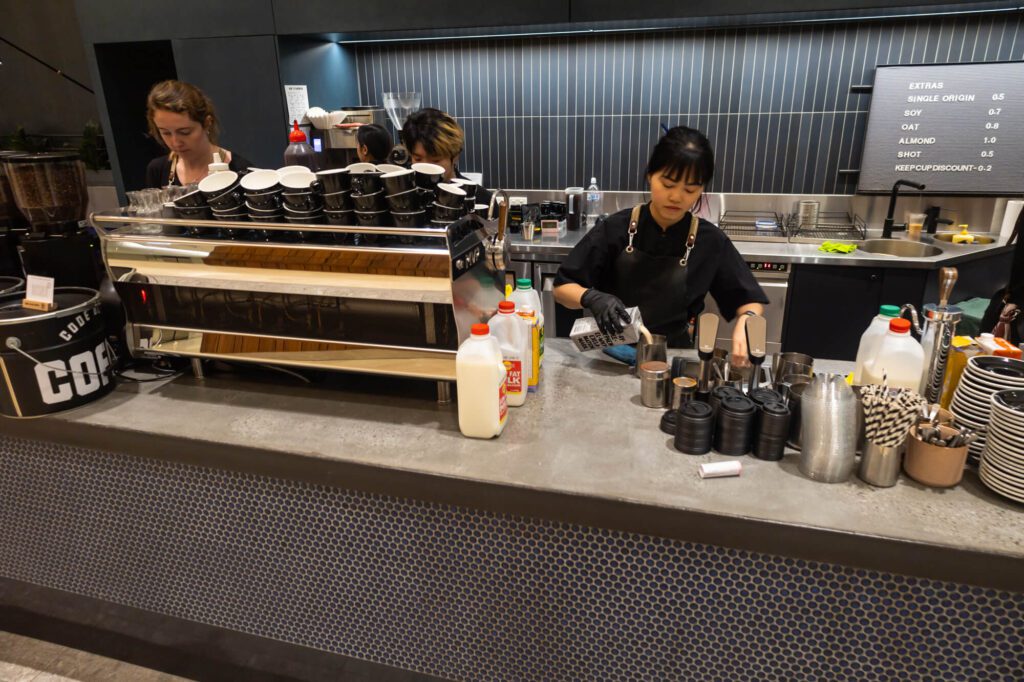
What We Ordered:

Long Black
Initially, I had ordered a cup of their batch brew. I honestly wasn’t a fan of it because of how weak the ratio was of coffee to water.
That’s not to say their batch brew wouldn’t be your jam, just not mine.
So, I politely told them I wanted something stronger, they suggested a long black, then made it for me for no extra charge. They were so kind and helpful about the exchange!
The long black was much better, and was brewed with their Seasonal Blend (two Ethiopian coffees and one Brazilian) and it didn’t need any milk.

Double Ristretto
The Seasonal Blend brewed for the ristretto was phenomenal, and had a super strong punch of fruit, bright floral notes, and a pleasant acidity.
Specifically, their Seasonal Blend has a mix of these origins with the specific percentages unknown:
- Honey Process from Tade GG (Ethiopia)
- Washed Process from Vinhal (Brazil)
- Natural Process from Uraga (Ethiopia)
They describe the flavor as having notes of raspberry, grapefruit, coconut, dark chocolate, vanilla, and hazelnut.
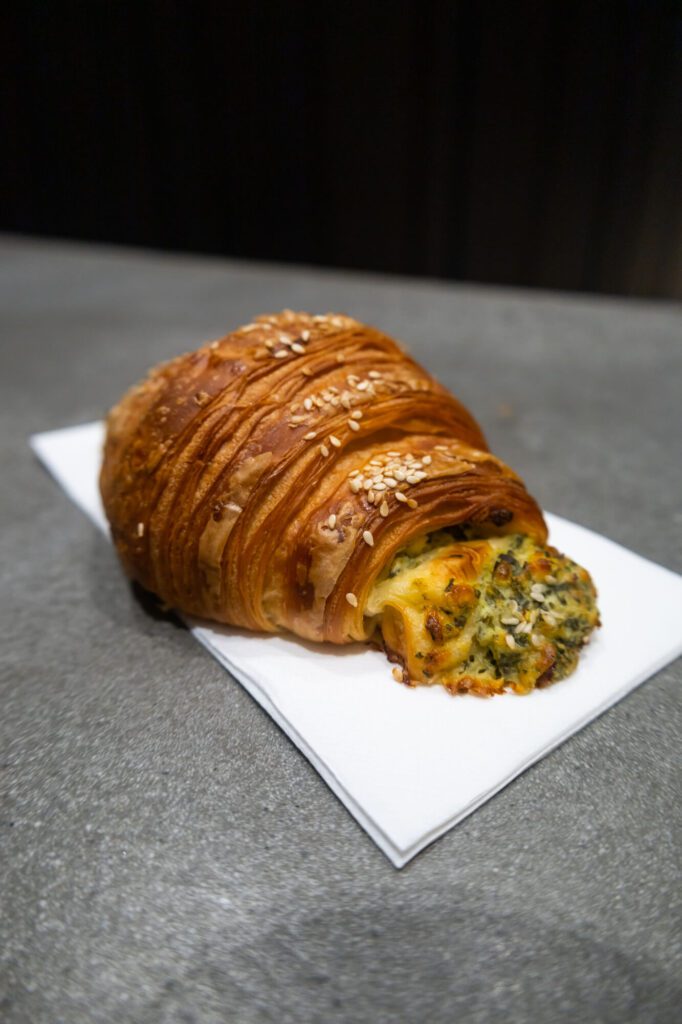
Spinach & Cheese Croissant
Not much to say here except that the pastry was super flaky, fresh and delicious.
The filling was also very tasty because Australia’s dairy is beyond superior quality to what we have in The States.
We also found a common theme throughout Australia’s coffee culture: many cafes don’t serve drinks only based on specific roast profiles as Starbucks or Dunkin’ would. And, most cafes don’t brew anything darker than what Americans would consider a medium roast.
For example, a filter or espresso-based drink served black would be brewed with either a specific blend of different origins or single-origin that lends to a flavor profile best enjoyed without milk (usually a sweet and fruitier taste on its own).
Then, they’ll use a different blend or single-origin that has notes of chocolate, hazelnut, etc., to best complement a milk-based drink.
Growers Espresso (Our Favorite)
Undoubtedly, my favorite spot was Growers Espresso: a progressive, independent and humble micro roaster whose coffee is roasted in house by 20-year veteran, Mark Ryan, creating a freshness and depth of flavor like nowhere else we found.
Growers Espresso uses Eureka Coffee (Mark’s sourcing company), and is brewed by baristas Roland and Moia (pictured). They’ll make you question whether you ever truly understood coffee as a whole up until you’ve tasted theirs!
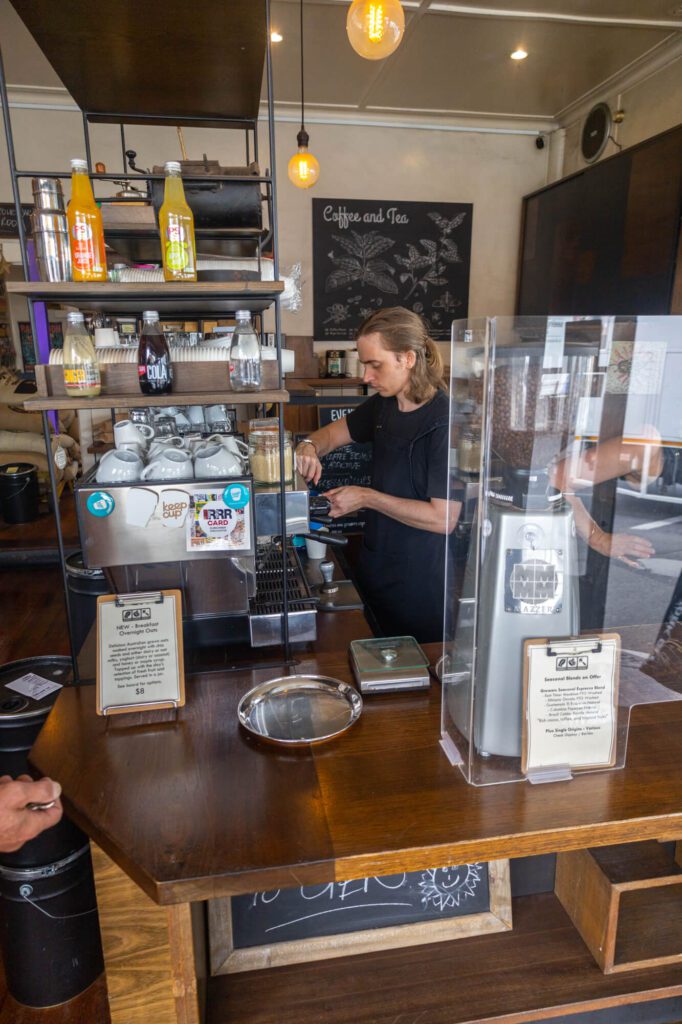
What We Ordered:
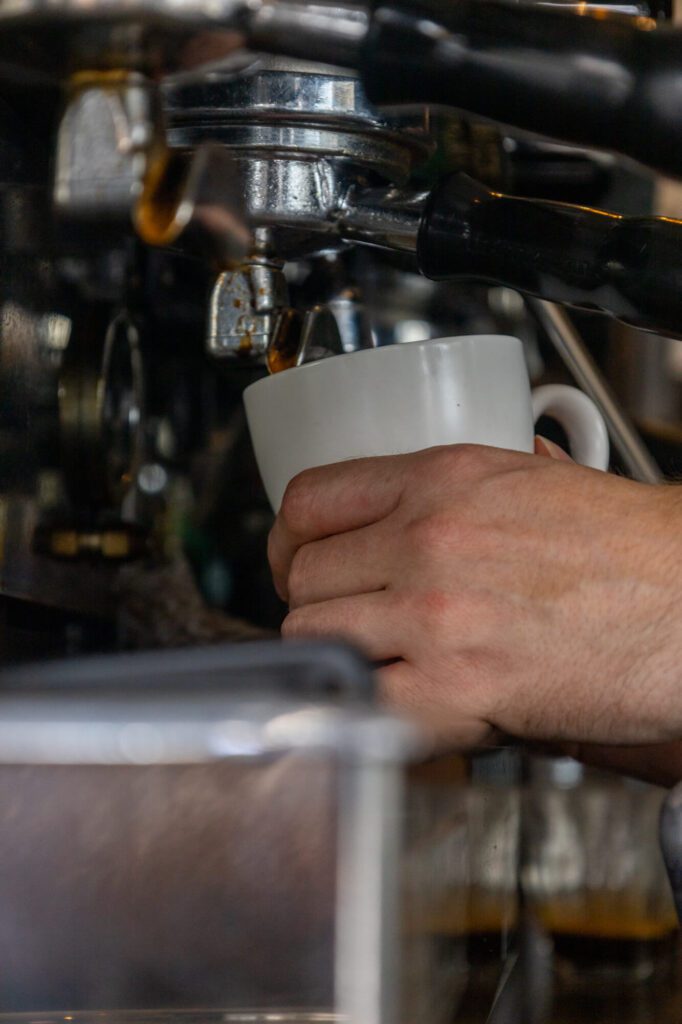
Double Ristretto
Brewed with Aussie beans!
We cannot overstate this enough: Australian-grown coffee is a big deal and it’s a coffee you have to taste for yourself because words can only do so much to describe the experience.
Growers Espresso is also one of only a handful of shops in all of Australia that I could find who serves Australian-grown coffee in-house!
The stuff is super difficult to come by.
What does it taste like? Mild, but that’s not to say it’s flavorless. That’s where this coffee is so unique, and Roland brewed me a mind-blowing double ristretto.
It had very earthy notes and was quite nutty, with super subtle chocolate undertones.
The double ristretto really helped me taste the uniqueness, otherwise, its flavor would’ve been completely lost in a latte or cappuccino.
It’s just so difficult to put my finger on the flavor, so I’ll tell you what they say the tasting notes are:
- Cherries
- Nuts
- Chocolate
- Marzipan
- Marmalade
Here’s the perfect analogy for Aussie beans: the tasting profile of these beans is to specialty coffee as Australia is to America. Familiar, approachable, and yet different enough to make you feel completely transported to another world without feeling lost or overwhelmed.
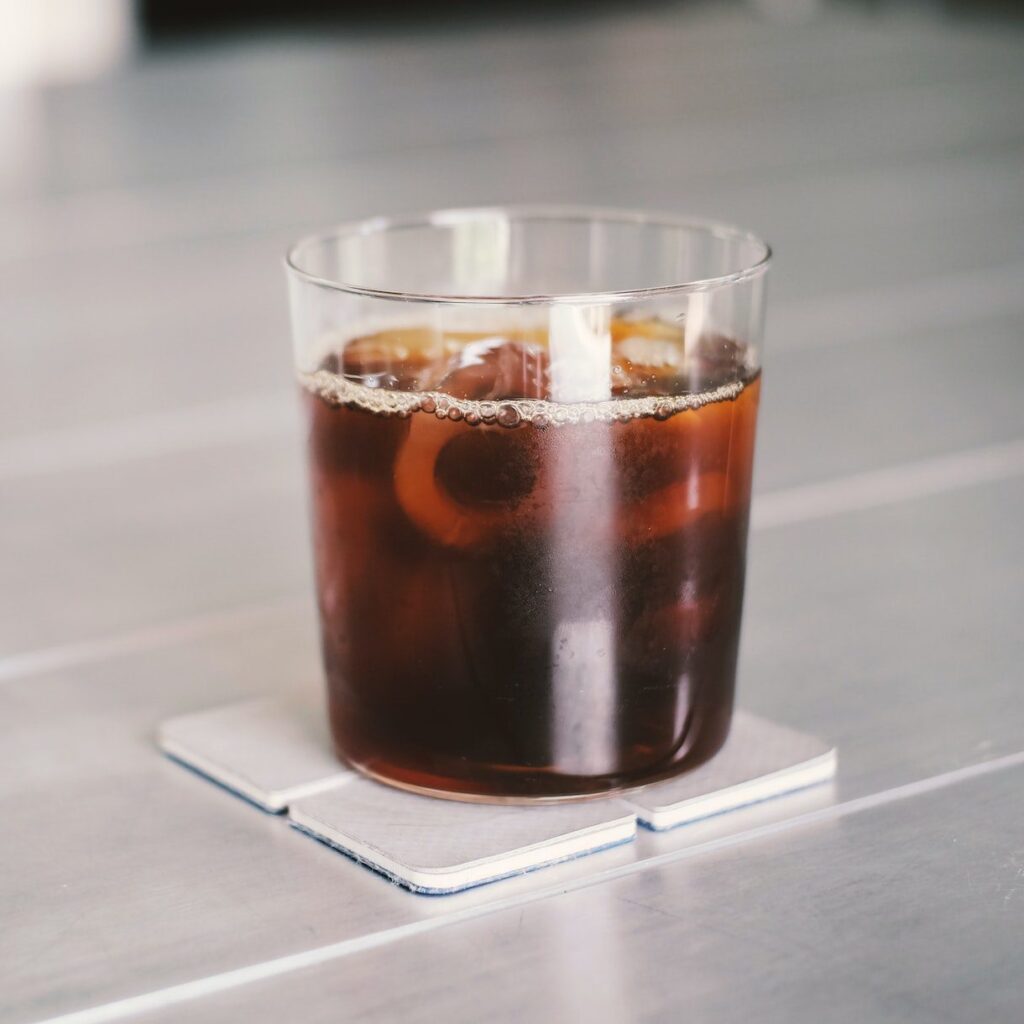
Cold Brew
Sorry, don’t have a pic for this (using a stock photo), but it was also brewed with Aussie beans!
When cold brewed, it tastes A LOT like tea more than it does coffee. It’s extremely light in flavor, smooth, clean, and bright, but not too acidic or bitter.
To my recollection, Roland had brewed this batch himself.
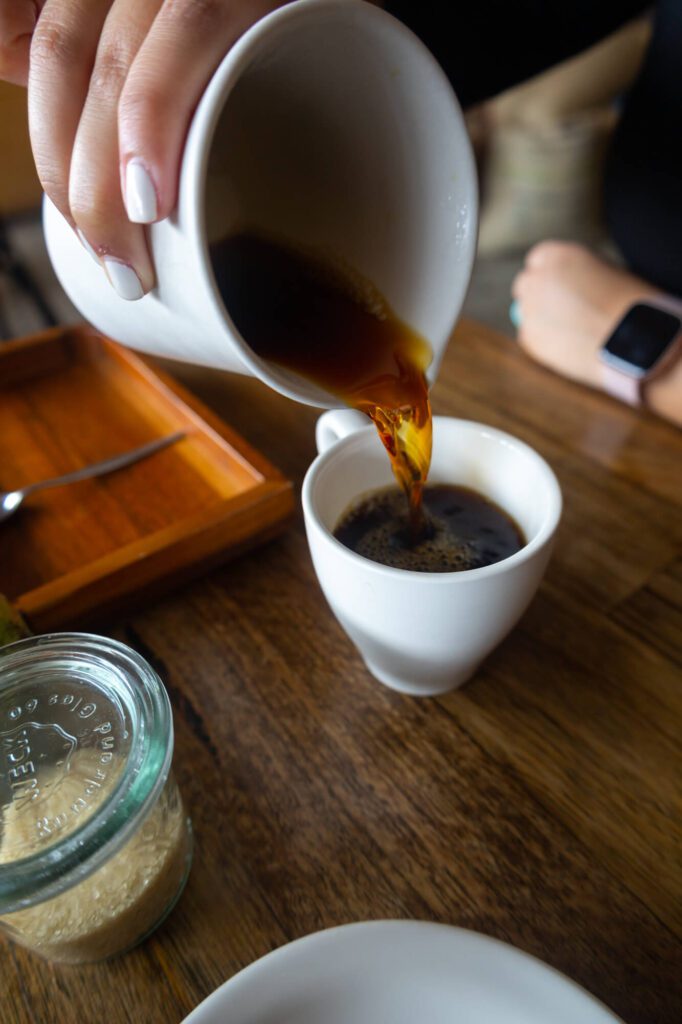
Pour Over
This delicious, strawberry-forward, natural process coffee comes from Panama Hartmann Estate, which is perfectly roasted by Eureka. They also describe the coffee as:
“This ‘winey’ lot is produced from very ripe coffee cherry which is carefully dried on raised beds to avoid over-ripening. The process produces sweet and interesting fruit flavors.
[Panama Hartmann Estate is] world-renowned for their high scoring and diverse coffees.”
Industry Beans
Industry Beans is striking aesthetically with its modern, minimal style and a great selection of high-end specialty coffees that taste just as good as they look.
With its roots in Fitzroy, Melbourne, Industry Beans is also one of the largest suppliers of roasted coffee in Australia, and as of this writing, it has a total of 6 cafes across the country.

What We Ordered:
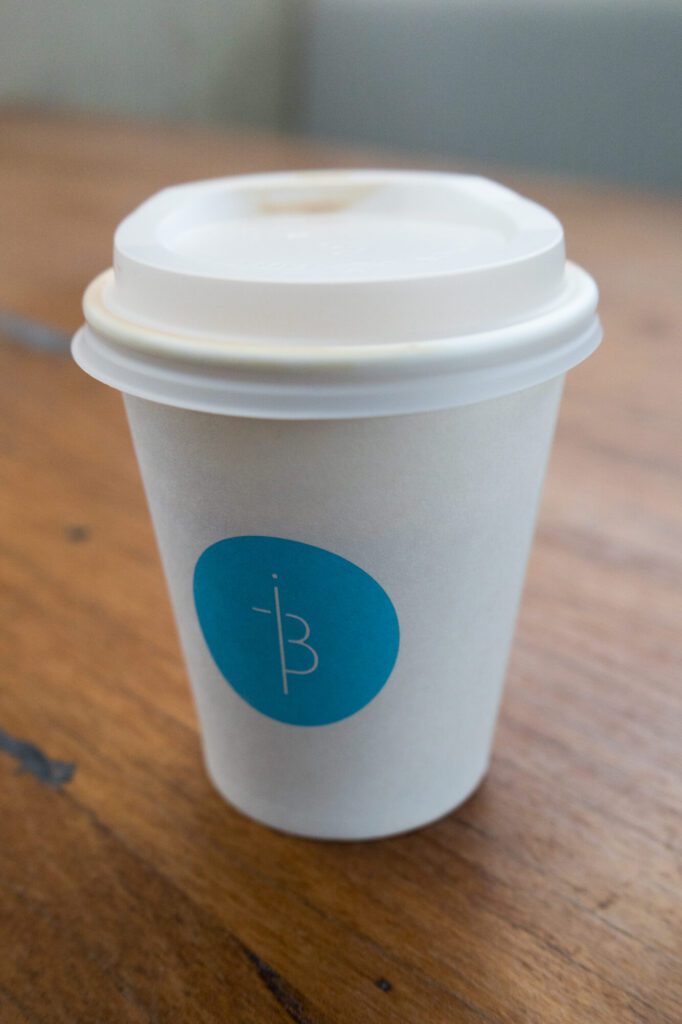
Double Shot of Espresso
Brewed using their coffee from Shantawene, Sidamo, grown at the foot of the Bombe mountains in Ethiopia.
This washed process coffee was super intense (like most espressos would be due to its brewing style), and featured tasting notes of white peach, pineapple, and nougat.
It was incredibly delicious!
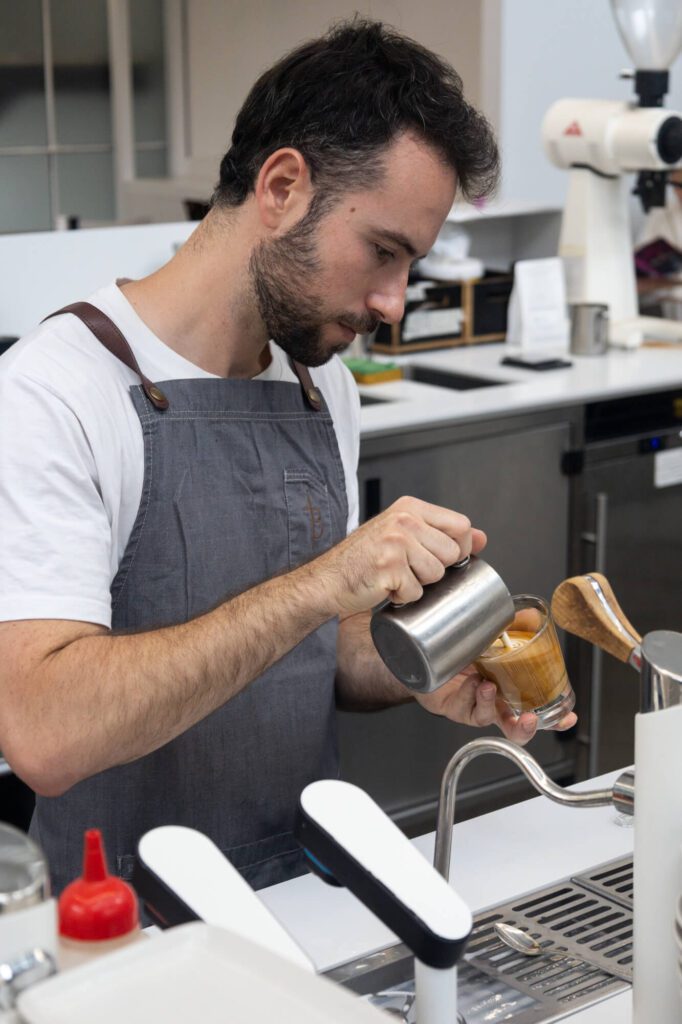
Magic
Brewed using their signature espresso blend, Fitzroy Street, which is a combination of these fantastic origins:
- 33% San Manuel, Honduras
- 33% Palo Alto, Colombia
- 34% Nyagashiha, Burundi
Each origin contributes to these three specific tasting notes, which were only slightly subdued by the milk:
- Blackcurrant
- Blood Orange
- Chocolate
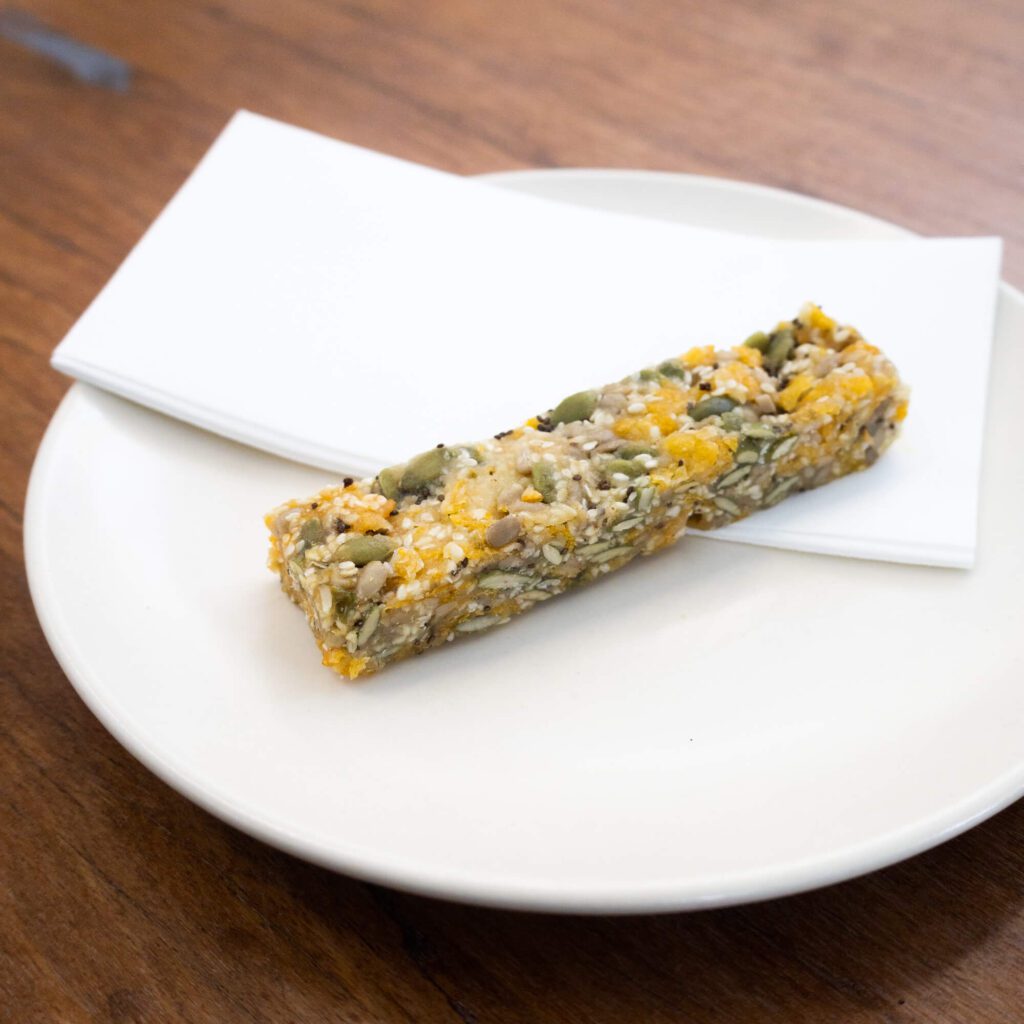
Honeyseed Slice
How tasty this snack was was unfair! You won’t find a delicious treat like this at any coffee shop in SoCal (at least from one that I’ve visited).
Now, how healthy it is, truly has yet to be discovered.
However, I damn sure felt healthy eating a homemade mix of fresh nuts and seeds stuck to a sweet, sweet bar of—something!
Market Lane Coffee
This quaint, but busy location (we visited on a Sunday) offers a small coffee bar atmosphere with a wide selection of single-origins and blends.
Like Industry Beans, Market Lane is another chain of small cafes, and again as of this writing, totaling 9 around Melbourne’s home state of Victoria.
The friendly and polite staff and baristas aren’t just experts in making filter coffee and espresso, but they’re incredibly knowledgeable about where the coffee is sourced.

What We Ordered:
Magic
A sweet and creamy drink brewed with their seasonal espresso blend.
The seasonal blend is made up of an 80/20 mix between a Guatemalan washed process coffee and an Ethiopian natural process coffee.
Note: if you’re unsure what a magic is, take a look at the glossary towards the middle of this post.
Pour Over
A filter coffee using their Ethiopian natural process coffee from Tarekech Werasa.
It tasted delightfully fruity with light floral notes and a clean finish.
Coffee Flower Tea Spritzer
Made from a concentrate using hand-picked and dried coffee flowers. This is different from cascara coffee cherry tea.
The concentrate is then poured over sparkling water to provide notes of jasmine, hibiscus, honeysuckle, and green tea.
Cascara Cold Brew
This refreshing drink was cold-brewed in-house using their cascara.
It was sweet but not too sweet and retained cascara’s natural tamarind flavor through this drink’s predominant licorice notes along with plum, dried apricot, lemon, and honey.
Usually, licorice isn’t my jam, but this wasn’t overwhelming and didn’t taste artificial. Overall it had a pleasantly balanced taste.
BONUS SPOTS!
With so many places to visit that offer both coffee and food, there were a couple of spots that were especially noteworthy, so we had to put them on this list somehow.
Lune Croissanterie
An absolute must-visit while exploring the coffee culture of Melbourne is the highly acclaimed Lune Croissanterie.
Taking it to a higher level than your typical French destination, Lune Croissanterie has carefully crafted delicacies that will make you rethink how good a croissant can be. Arguably the quintessential croissant experience you shouldn’t miss.
It was such a cool, interesting and unique vibe for a patisserie that, on its own along with the quality of food, will make you fall in love with Melbourne.
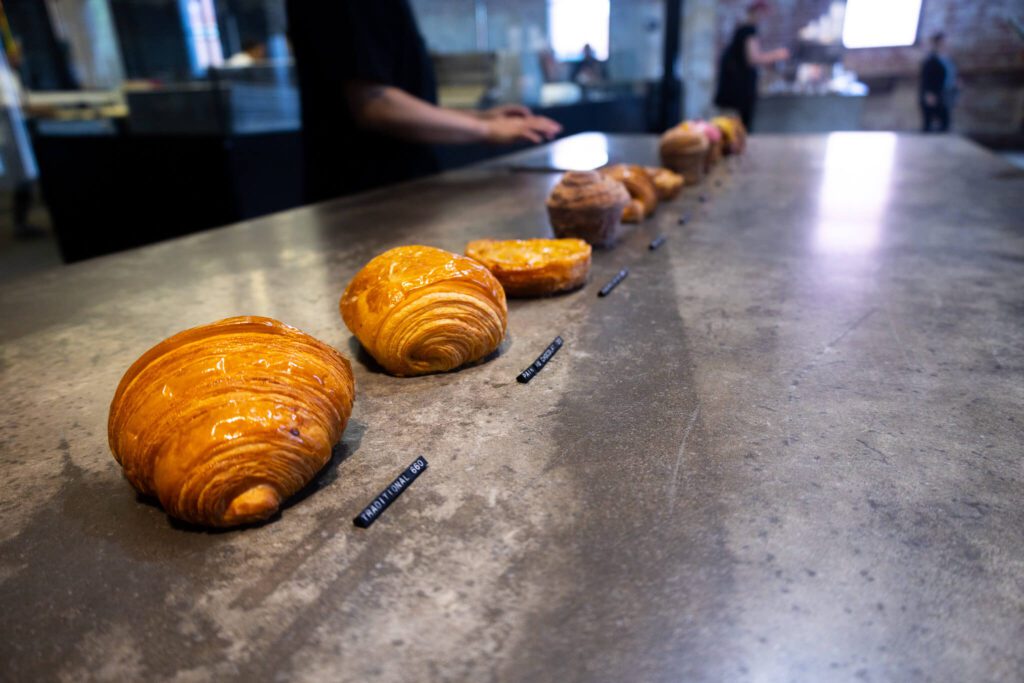
What we ordered:
Check out these mouth-watering, sweet January specials and one year-round savory delight.
Sorry, we don’t have pics of each one; we ate all our croissants before we remembered to snap photos for the blog!
Coconut Rough
A twice-baked pain au chocolat filled with chocolate coconut frangipane, topped with baked coconut flakes and dark chocolate.
Pineapple Upside Down
Made from a classic cake base and topped with rum-roasted pineapple.
Ham and Gruyere Croissant
An alluring mix of Swiss Gruyere, shaved ham, and seeded mustard.

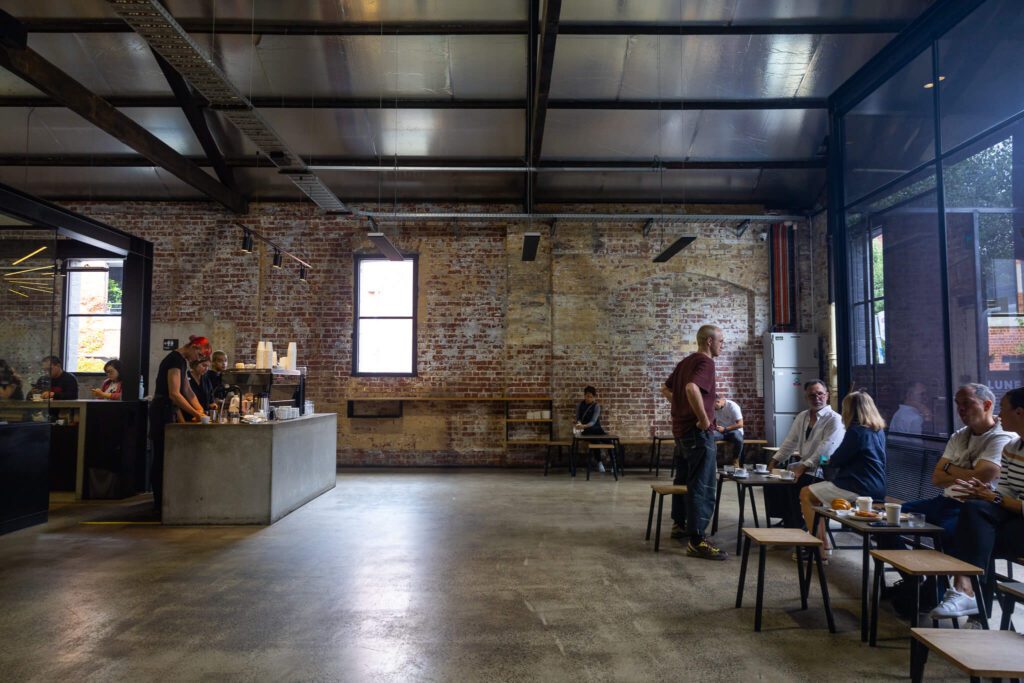
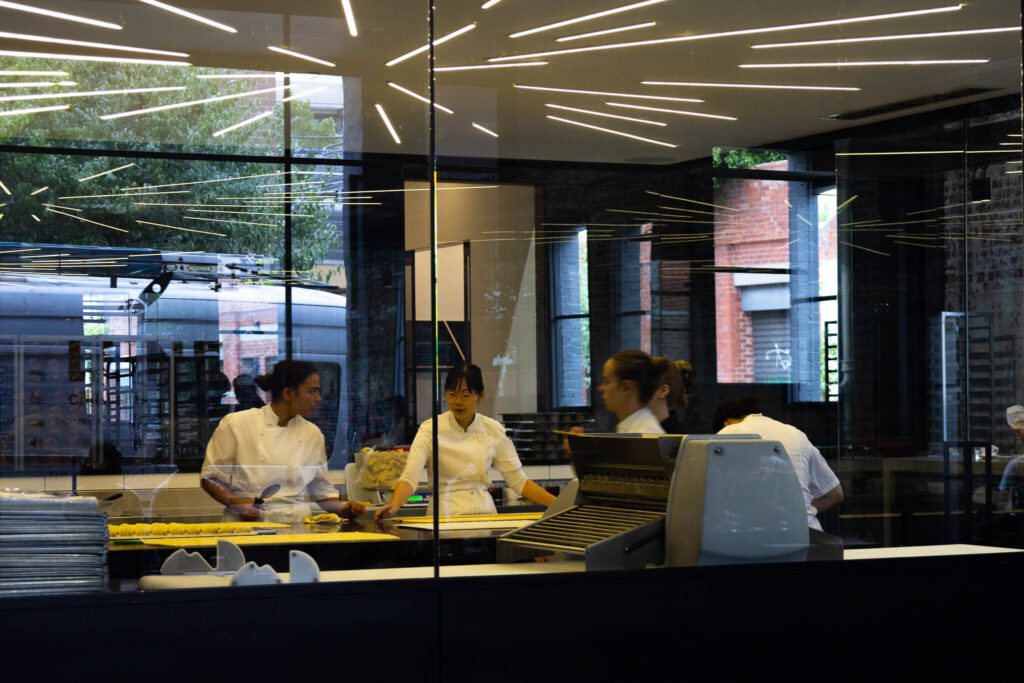

Top Paddock
Top Paddock impressed me with their array of amazing food and of course, their coffee.
They really seemed to understand that it was much more than just a cup of coffee. I had a pour-over, and these folks spared no expense in its presentation: cup, hot carafe, and an info card beans’ origin story – everything you’d expect from a specialty cafe served on a fancy wooden board.
The only thing missing was charcuterie.
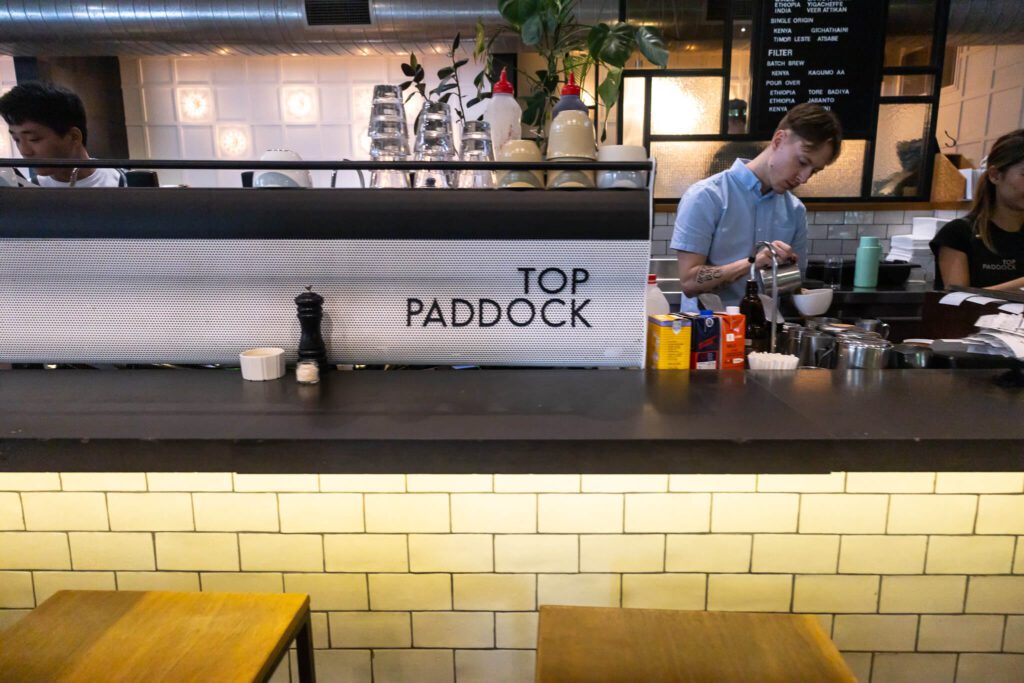
Even in the bustling restaurant atmosphere, I could easily feel their deep commitment to providing customers with an exceptional coffee experience.
This is a stark contrast against the coffee-as-an-afterthought tradition you typically get at restaurants and diners in The States.
What we ordered:
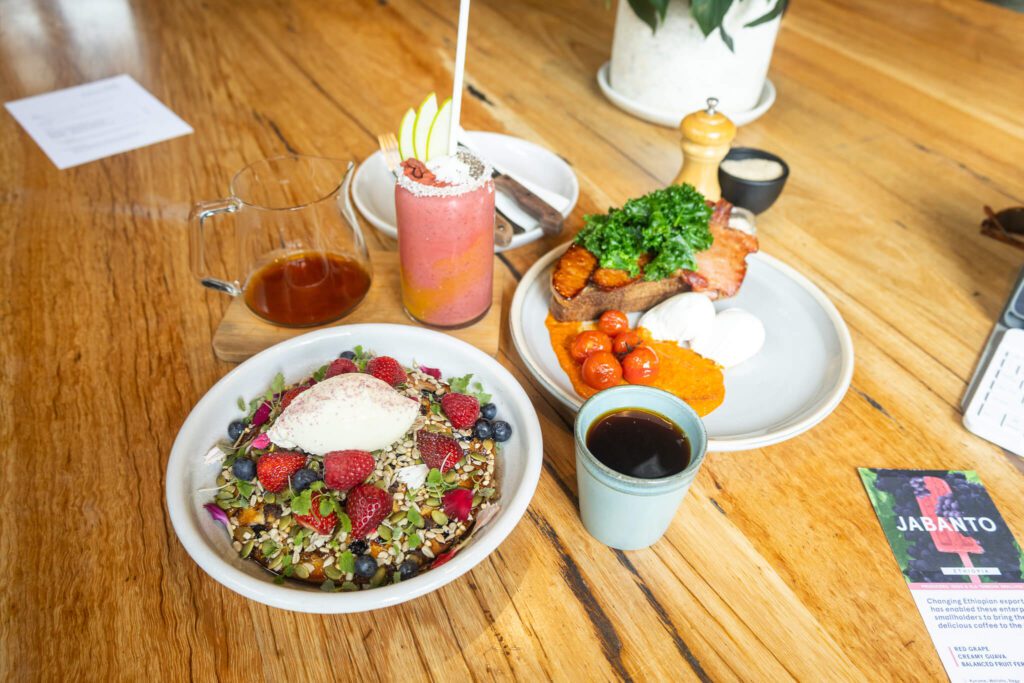
Blueberry & Ricotta Hotcake
Seasonal berries, double cream, toasted seeds and grains, maple syrup.
The Top Paddock
Poached eggs, smoked bacon, sautéed greens, chorizo, pickled red onions, cherry tomatoes, house romesco sauce, and toasted sourdough.
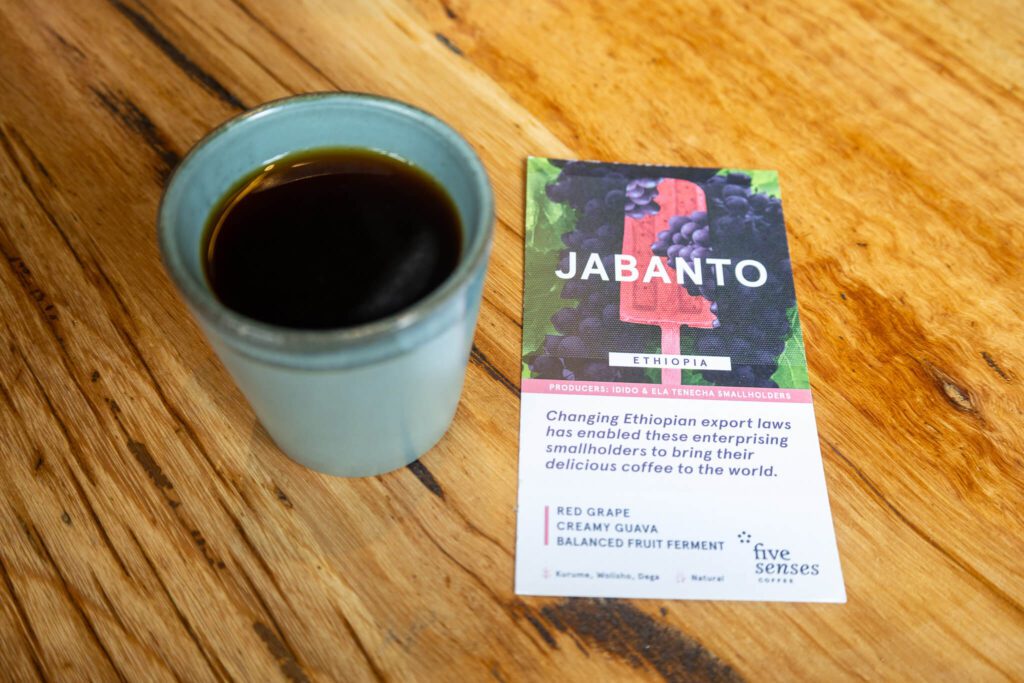
Filter Coffee
This Ethiopian, Jabanto coffee from the Yirgacheffe region had a distinct taste and aroma and was grown by Idido & Ela Tenecha farmers.
This brew had some serious punch-packing tasting notes of red grape, creamy guava, and fermented, yet balanced fruit.
Is coffee better in Melbourne or Sydney?
The short answer amongst Australians and myself: Melbourne.
Long answer: travel to Australia and discover your personal reason why Melbourne is.
Final thoughts: why Melbourne is the best place for coffee lovers to visit.
Wrapping up my journey through Australia’s coffee culture, I have to say that here you’ll find some of the top baristas from around Australia utilizing modern techniques to create simple, yet unforgettable creations you really can’t experience anywhere else.
Despite the city being a less popular tourist destination compared to Sydney, Melbourne’s coffee scene is far more diverse and exciting.
From the coastal cafes of St Kilda and South Melbourne Beach all the way to the hidden gems of North Fitzroy, this city truly has something for everyone.
This city knows how to do coffee right, and there’s a reason why the locals are justifiably proud of their caffeinated selections – they simply can’t be compared. In the end, this remarkable city should definitely be high up on any connoisseur’s list of must visit cities…and just a day or two won’t be enough (three wasn’t even enough for us).
Melbourne is in our opinion, definitely the coffee capital of Australia and any traveler with even a passing interest in specialty coffee should make it a point to visit some of the cafes listed above.
The city has something for everyone, whether you’re looking for somewhere to get an Instagram-worthy meal or just want a great cup of coffee to start your day. And if you’re ever feeling overwhelmed by all the choices, remember that there are always people happy to point you in the right direction – just ask!
Have you been to Melbourne or are planning to visit?
Drop us a comment on Instagram or send us a DM, and let us know which cafes you’ve been to, or if this guide has helped you out!



